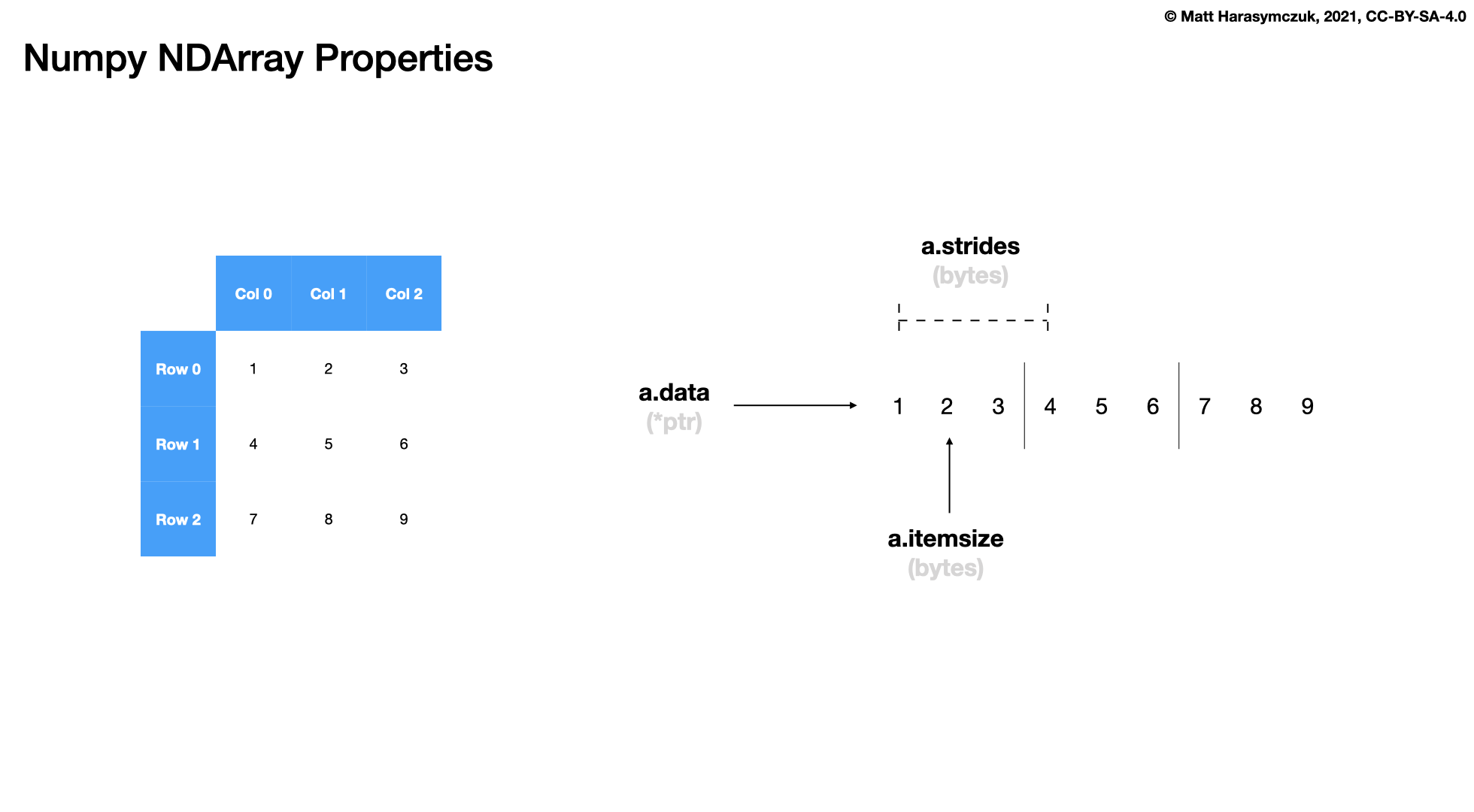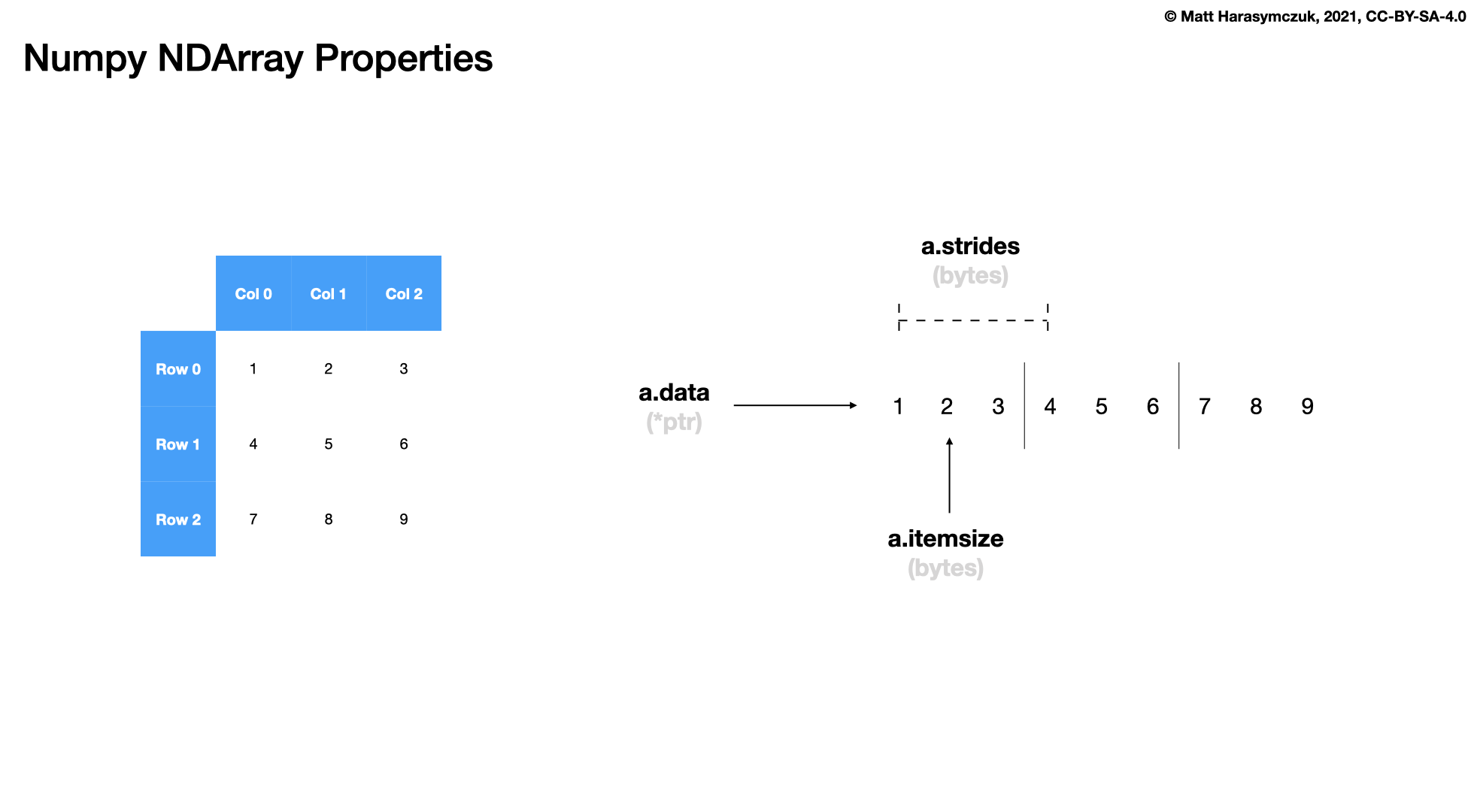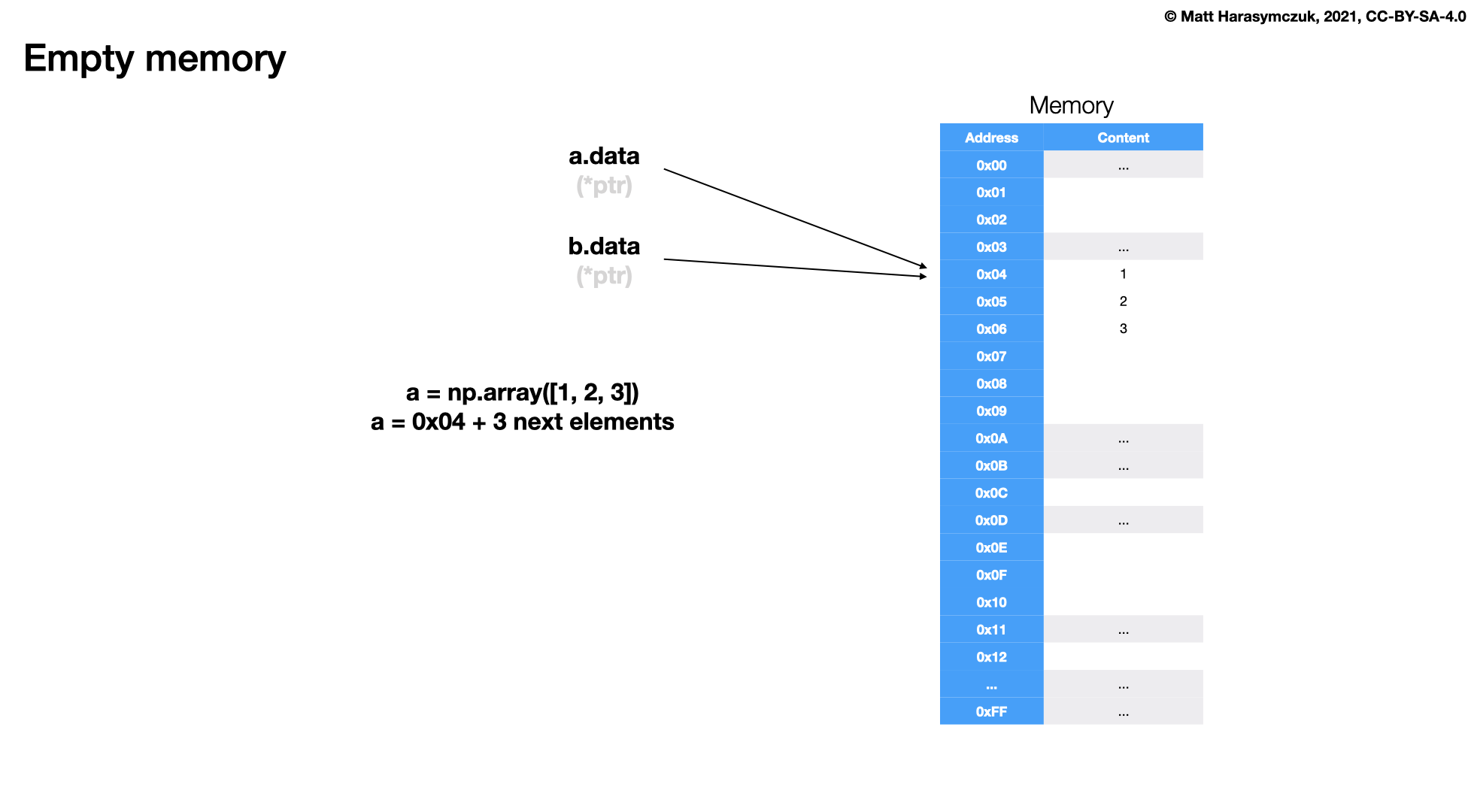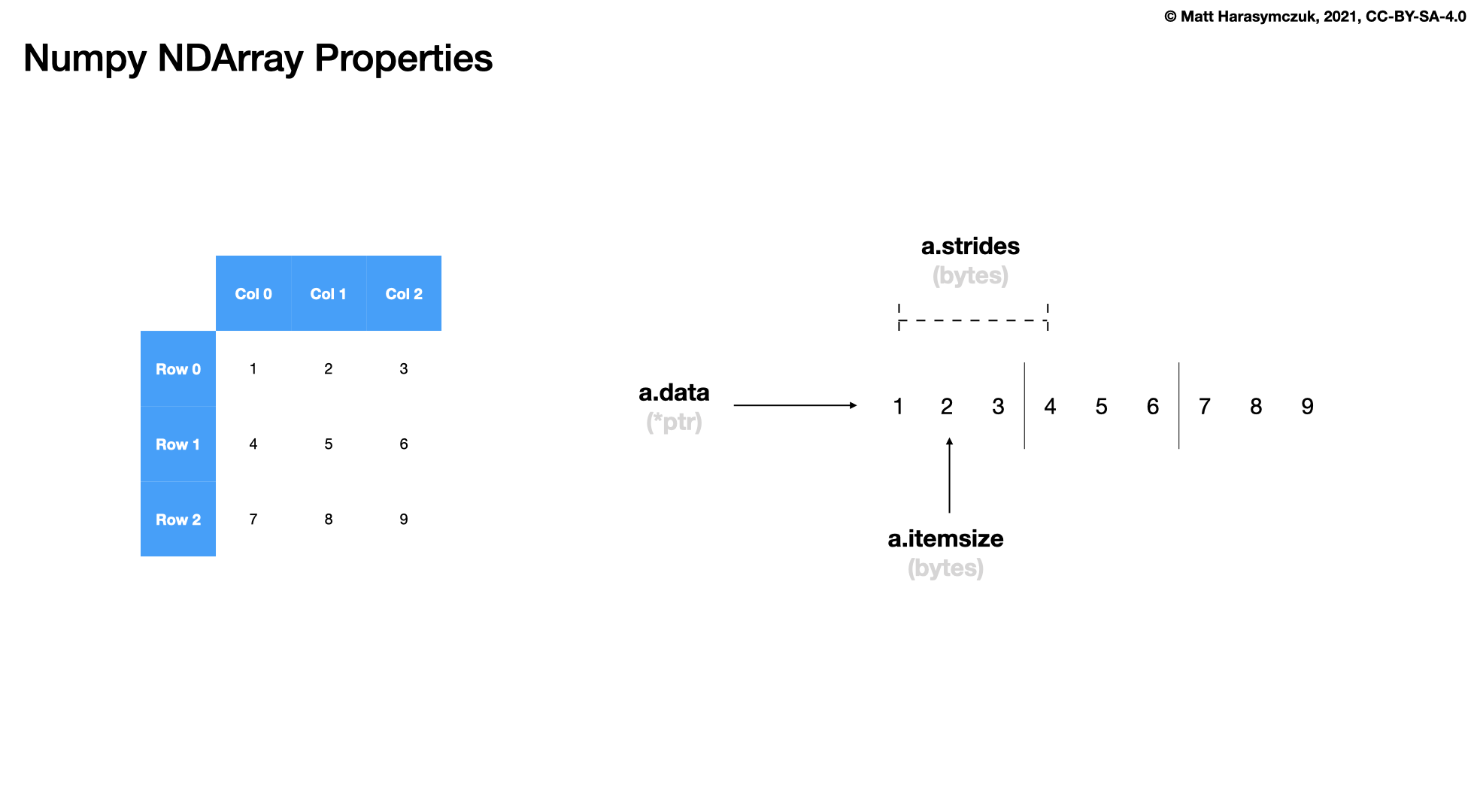3.4. Array Attributes¶
3.4.1. SetUp¶
>>> import numpy as np
3.4.2. Itemsize¶
int64takes 64 bits (8 bytes of memory)

>>> a = np.array([1, 2, 3], dtype=int)
>>> a.itemsize
8
>>>
>>> b = np.array([1, 2, 3], dtype=np.int0)
>>> b.itemsize
8
>>>
>>> c = np.array([1, 2, 3], dtype=np.int8)
>>> c.itemsize
1
>>>
>>> d = np.array([1, 2, 3], dtype=np.int16)
>>> d.itemsize
2
>>>
>>> e = np.array([1, 2, 3], dtype=np.int32)
>>> e.itemsize
4
>>>
>>> f = np.array([1, 2, 3], dtype=np.int64)
>>> f.itemsize
8
>>> a = np.array([1, 2, 3], dtype=float)
>>> a.itemsize
8
>>>
>>> b = np.array([1, 2, 3], dtype=np.float16)
>>> b.itemsize
2
>>>
>>> c = np.array([1, 2, 3], dtype=np.float32)
>>> c.itemsize
4
>>>
>>> d = np.array([1, 2, 3], dtype=np.float64)
>>> d.itemsize
8
3.4.3. NBytes¶
int64takes 64 bits (8 bytes of memory)

>>> a = np.array([1, 2, 3], dtype=int)
>>> a.nbytes
24
>>>
>>> b = np.array([1, 2, 3], dtype=np.int0)
>>> b.nbytes
24
>>>
>>> c = np.array([1, 2, 3], dtype=np.int8)
>>> c.nbytes
3
>>>
>>> d = np.array([1, 2, 3], dtype=np.int16)
>>> d.nbytes
6
>>>
>>> e = np.array([1, 2, 3], dtype=np.int32)
>>> e.nbytes
12
>>>
>>> f = np.array([1, 2, 3], dtype=np.int64)
>>> f.nbytes
24
>>> a = np.array([1, 2, 3], dtype=float)
>>> a.nbytes
24
>>>
>>> b = np.array([1, 2, 3], dtype=np.float16)
>>> b.nbytes
6
>>>
>>> c = np.array([1, 2, 3], dtype=np.float32)
>>> c.nbytes
12
>>>
>>> d = np.array([1, 2, 3], dtype=np.float64)
>>> d.nbytes
24
3.4.4. Strides¶
int64takes 64 bits (8 bytes of memory)Strides inform how many bytes numpy has to jump to access values in each dimensions

>>> a = np.array([1, 2, 3])
>>>
>>> a.strides
(8,)
>>> b = np.array([[1, 2, 3],
... [4, 5, 6]])
>>>
>>> b.strides
(24, 8)
>>> c = np.array([[1, 2, 3],
... [4, 5, 6],
... [7, 8, 9]])
>>>
>>> c.strides
(24, 8)
>>> d = np.array([[[ 1, 2, 3],
... [ 4, 5, 6],
... [ 5, 6, 7]],
...
... [[11, 22, 33],
... [44, 55, 66],
... [77, 88, 99]]])
>>>
>>> d.strides
(72, 24, 8)
3.4.5. Data¶
>>> a = np.array([1, 2, 3])
>>>
>>> a.data
<memory at 0x...>
>>> b = np.array([[1, 2, 3],
... [4, 5, 6]])
>>>
>>> b.data
<memory at 0x...>
>>> c = np.array([[[ 1, 2, 3],
... [ 4, 5, 6],
... [ 5, 6, 7]],
...
... [[11, 22, 33],
... [44, 55, 66],
... [77, 88, 99]]])
>>>
>>> c.data
<memory at 0x...>

3.4.6. Recap¶

3.4.7. Assignments¶
"""
* Assignment: Numpy Attributes
* Complexity: easy
* Lines of code: 7 lines
* Time: 5 min
English:
1. Define `result: dict` with:
a. number of dimensions;
b. number of elements;
c. data type;
d. element size;
e. shape;
f. strides.
2. Run doctests - all must succeed
Polish:
1. Zdefiniuj `result: dict` z:
a. liczbę wymiarów,
b. liczbę elementów,
c. typ danych,
d. rozmiar elementu,
e. kształt,
f. przeskoki (strides).
2. Uruchom doctesty - wszystkie muszą się powieść
Tests:
>>> import sys; sys.tracebacklimit = 0
>>> assert result is not Ellipsis, \
'Assign result to variable: `result`'
>>> assert type(result) is dict, \
'Variable `result` has invalid type, expected: dict'
>>> result # doctest: +NORMALIZE_WHITESPACE
{'number of dimensions': 2,
'number of elements': 6,
'data type': dtype('float64'),
'element size': 8,
'shape': (2, 3),
'strides': (24, 8)}
"""
import numpy as np
DATA = np.array([[-1.1, 0.0, 1.1],
[2.2, 3.3, 4.4]])
result = {
'number of dimensions': ...,
'number of elements': ...,
'data type': ...,
'element size': ...,
'shape': ...,
'strides': ...,
}